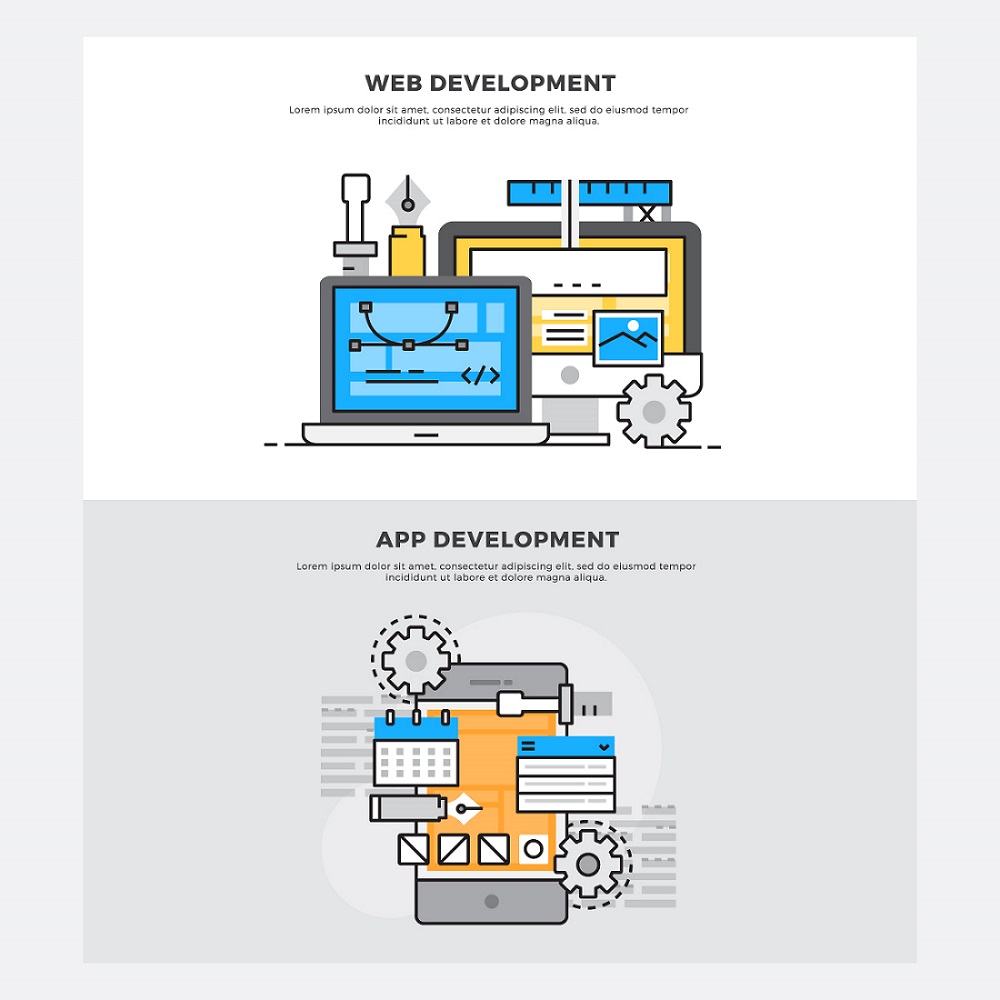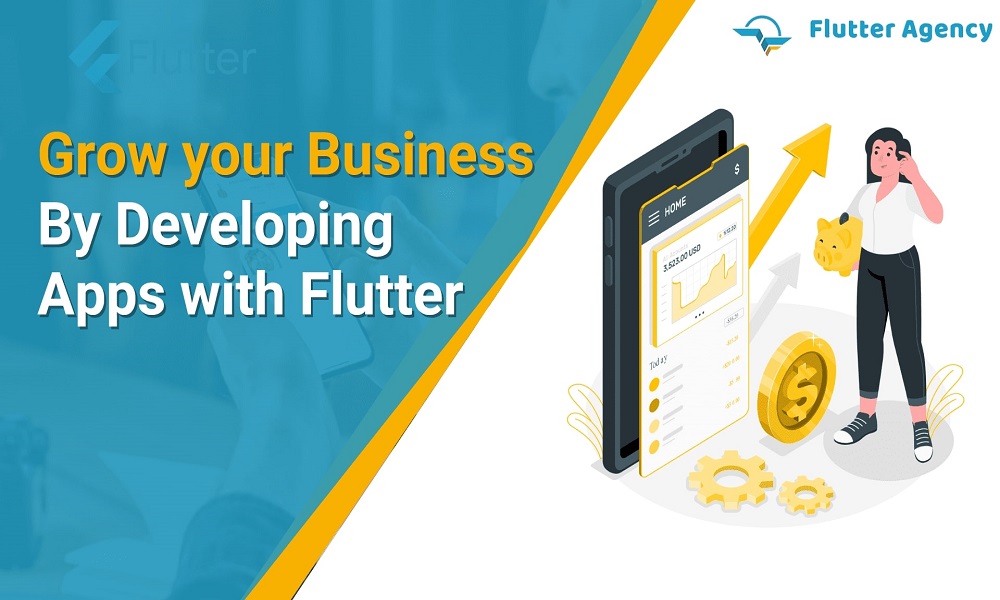Boost Your Business by Developing An App with Flutter Technology
Flutter is the latest toolkit that enters the cross-platform mobile app development market. The main objective of all these trending frameworks, like React Native and Xamarian, is to reduce the time-to-market without compromising their UI/UX design for Android and iOS. However, business owners have a basic understanding of cross-platform development, its tools, and how to cope with it. This post will explain the capabilities of Flutter and explain how your business can take Flutter advantage of the advanced mobile app development tool.
What is Flutter Technology?

Google released Flutter in 2017 by permitting developers to build native mobile apps with a single codebase. The open-source mobile UI framework authorizes using only one programming language for creating apps for multiple platforms. Also, Flutter has a widget-based UI library. The hybrid nature of Flutter adds the SDK as a toolkit which will grant you to compile the code into the machine code for both iOS and Android.
Flutter is developed as a solution for the issue of cross-platform development with a single familiar UI. Other available tools can represent the standard user interface for several platforms like React Native, etc. Flutter has the well-known motto of cross-platform development: write once, and run everywhere. This motto goes perfectly with the UI of all platforms.
What should you get from the cross-platform framework?
- It will display the native UI
- Native performance of UI
- Works on any OS as if it is a native app
- Frontend-centric runtime
- Easy-to-learn programming language
A universal Cross-platform framework meets all our requirements that exist from Flutter. This simple language will interact with a UI. Now, let’s see how this framework will solve the issues of cross-platform mobile development. We will provide you with some relevant tips on how your business can take advantage of all those things.
What is Flutter and Native-looking UI?
The cross-platform aims of frontend developers are simple: create an interface indistinguishable from the native UI that offers natively fast performance. Flutter will meet the objectives completely. A native-looking UI is what immerses your future customers in your mobile app. It will help you to improve the retention rate for your business.
The programmers of Flutter have spent enough resources to make its UI elements look native in every framework. All Flutter widgets have come up into three categories: Cupertino widgets, material widget design, and all the others.
Flutter not only allows native-looking elements for both platforms, but it will develop its own. In the Flutter, “everything is the widget,” this paradigm works. You can build complex UI elements in less order. Everything will work with the same graphic engine, directly rendering everything for Android and iOS. All the UI elements will appear the same as per your expectation.
Customization is the most critical factor in every business. However, you can attract your consumers with custom widgets that will give the look and feel of the applications created from Cupertino.
From the point of view of rendering, Flutter did not care what API was available for which platform. You can create UI elements from the new android version for a seven-year-old smartphone.
While developing the app, remember that the First impression is the last. Impress your app users with great widgets and make them feel good with the native-looking UI.
What is Flutter and Native Performance?
Skia Graphic Library is the only engine that will render UI for both platforms in Flutter. As per the research, skia is going 50 times faster than other libraries like Cairo.
Performance is the most crucial concern in any software development. However, most users will leave your application if they find it works slowly. Flutter delivers the custom app development services with outstanding performance.
Skia can interact with several GPU backends: Metal for iOS, OpenGL, and Vulkan for Android. Therefore, it is possible to gain productivity for your app with multiple platforms.
The Hot reload is the other feature that makes work easy for the Flutter developer team. It will give instant changes in the code without disturbing the process. Due to this development, time and cost are both saved. It will eliminate redundant recompilation and will boost performance.
Flutter web app development will take care of the app’s performance, and better performance will give the best retention rate. The time you spend developing the app becomes much shorter with this framework.
What is Flutter and Dart?
Flutter is developed with the Dart programming language. From the syntax point of view, it is something between Java and JS. Dart and relevant VM were initially designed for the replacement of Java. By default, Flutter language is front-end-centric.
This language is directly linked with your project’s time-to-market, no matter how difficult it is. A code in the Dart is quickly compiled into the machine code. It can compare the performance with Swift, Kotlin, and Objective-C. A developer familiar with Java and JS will easily understand and learn Dart within a few days. Besides, the Flutter community is growing continuously and doesn’t seem to slow down.
Both Flutter and Dart have been introduced as cross-platform app development. It is simple and viable and will define what your business app needs to become successful.

What challenges are faced during the Flutter development process?
Flutter has an innovative approach to UI development which is a blessing and curse for the developers. It will bring the best out of native and cross-platform development.

1. Different from the typical Ui development experience
The primary issue is dealing with the Dart language. A Javavweb development attributes it to making learning more accessible, but it; is still new. Google has a lot of documentation. You only need a basic knowledge of Dart, which will create a decent app, but it requires a lot of effort in its initial stage.
2. Performance drops
The performance drops instantly if you are developing a complex interface with platform views. Every new menu and native API integration will greatly slow down an application. Google requires at least 3-4 updates to get Flutter a stable performance.
3. Long run executions
Dart has an issue keeping up with long-term activities. Suppose a user presses the back button or goes into a different app, then the Flutter action is completely blocked. It is not suitable for complex apps; if a user is downloading or filling out the registration form, it harms your application.
4. Random crashes
A Flutter developer team that reports multiple crashes is not connected to the code faults. Most technical issues arise when an application requires linking with a native API or running complex procedures.
Why is selecting the Flutter worth it?
Let’s see some of the properties of the Fluter framework, which is best for cross-platform development.
- UI and app logic will stay the same for any mobile platform.
- A rich set of an array of Ui settings that does not restrict your creativity.
- Faster coding that boosts a time-to-market, especially for MVP.
- The rendering engine delivers an app performance closer to a native app.
- A variety of native-looking widgets will make your product different from native apps.
- UI components’ design and implementation depend not on a specific platform.
- An app owner will not face any problems with technical support for your future product, and it is because of the growing community of Flutter experts.
- A business risk with cross-platform mobile development will be minimized with Flutter compared to the other frameworks.
Flutter framework is a quicker way to develop a cross-platform mobile application, giving the feel and look like a native.
Conclusion
Contact the best Flutter app development company, which will boost your business with the most promising cross-platform framework in the market. We will take care of the time and your budget.
Frequently Asked Questions (FAQs)
1. Is Flutter best for app development?
The productivity of Flutter is excellent, as it is cost-effective. It is the perfect choice for startup app development. Flutter’s framework supports IDEs like Android, Xcode, and visual studio code in cross-platform. It also has a well-organized and mobile GPU executing a UI, giving smooth and flexible performance across multiple interfaces.
2. What is the cost of Flutter app development?
Flutter app development charges for complex software like a messenger and voice calls, ranging from $34,950 to $48,850. An app like instagram will cost between $41,500 to $55,000.
3. Why is Flutter the best for app development?
Flutter’s code reusability allows you to write only a single codebase and use it for Android, iOS, web, and desktop. It will significantly cut down development time, eliminate the cost and enable you to launch your app much faster in the market.
Contemporary ventures
Recent blog
ready to get started?
Fill out the form below and we will be in touch soon!
"*" indicates required fields













